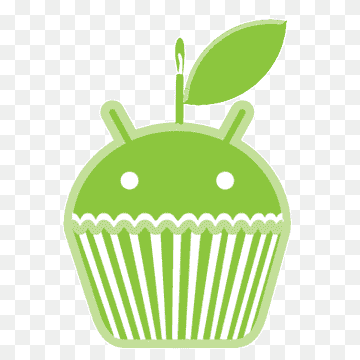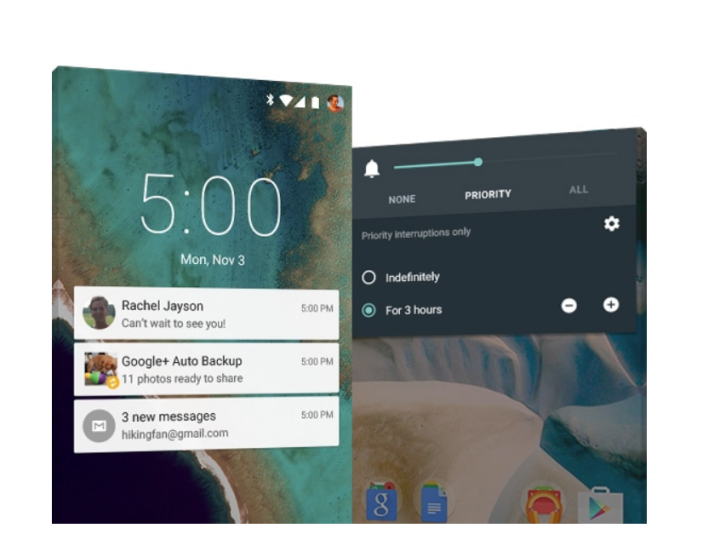As Android has matured from starting out as a niche phone OS to becoming the leading smartphone operating system in the world, it has seen a number of version updates over the years.
We’ve had Android OS versions with dark colors that were all about work and productivity; to versions that have prioritized personalization, aesthetic design, and smart AI features.

After 13 major OS updates, five versions, in particular, have had a huge impact on the way Android, and even the way smartphones, are being used by consumers today.
In this article, we’ll be ranking the 5 best Android versions so far and checking out what features and changes they introduced to the OS that made them so important in the grand scheme of Android smartphone history.
Table of Contents

First on our list is Android 2.3 Gingerbread. For many early users of Android, Gingerbread would probably be the Android OS they would remember when asked what “classic Android” looked like.
Outside of bringing notable features such as NFC, a much-improved virtual keyboard, and support for larger screen sizes, Gingerbread’s main highlight was the refined user interface and design it brought to the OS.

It introduced a black and bright green color scheme throughout the OS that served as Android’s early identity for a time. While it wasn’t the prettiest design language out there, Gingerbread gave Android users a much smoother and faster software experience compared to earlier versions of the OS that still felt a bit clunky and half-baked.
Gingerbread also gave us the glorious “Nexus” live wallpaper that we see above.

Android 1.5 Cupcake was the very first version of the OS that came with a dessert as its codename, and while Cupcake doesn’t seem spectacular at first glance, it introduced features that serve as pillars of Android today.

First among them is the inclusion of the very first virtual keyboard on Android. Back then, Android, and phones in general, lived and died with their physical keyboards and keypads. With Cupcake, we finally had a glimpse of what phone typing would look like with Android’s very first software-based onscreen keyboard.
Cupcake also introduced the ability to use third-party app widgets that could populate the home screen, which has now become a mainstay of Android (and even iOS) today.
While Gingerbread had the prettier design and smoother experience, it can’t be denied that Cupcake signified Android’s transition from being a cooky experiment to an interesting path in the world of mobile devices.

Being released with its all-new Pixel 6 flagships, Android 12 (codenamed internally as Android Snow Cone) offered another take on Android’s overall aesthetic and user interface with the introduction of Material You.
Building on Android 5.0’s Material Design standard, Android 12 themed the whole OS according to the colors of the wallpaper you choose. It changes the system colors, accent colors, and other parts of the OS to either serve in contrast to or complement the main colors of your wallpaper. It also gives you options to choose which mix of colors you prefer to have on your device.
Android 12 makes it so high on this list because Material You really helped solidify Android’s user-centered approach compared to the competition. It’s fun, quirky, pleasant-looking, and most of all, personal.

We also really like the simpler and larger buttons used in Android 12 that make it a much more user-friendly experience. Aside from Material You, Android 12 also introduced nifty features such as the much-awaited scrolling screenshots, spatial audio support, and an approximate location permission system.

Lollipop was one of, if not the most, significant updates in Android’s history. With 5.0 Lollipop, Android finally moved away from the dark hues and the bright green color scheme that shaped its design aesthetic for years into a cleaner and more refined UI standard they called “Material Design.”

Material Design in Android Lolipop centered around providing a “paper-like” look and feel to the user interface that mimicked how someone would interact with paper in real life. It featured an emphasis on cards for menus and notifications, app transitions having a clear start and endpoint, as well as an overall more “lively” look to the OS.
The Material Design revamp is so influential that it serves as the blueprint for the most recent Android 12 and 13 updates today, as seen in Android’ 12’s “Material You.”

Aside from Material Design, Lollipop introduced other important changes such as a refreshed notification system that allowed notifications to be accessed from both the lock screen and within an app as a banner, “Ok Google support,” improved battery optimization with Android’s “Project Volta”, and Smart Lock.


On top of our list of the best Android versions so far is none other than Android 4.0 Ice Cream Sandwich or more commonly known as ICS. While all of the Android versions mentioned here introduced a number of important Android features, none had the impact that ICS had.
ICS was undoubtedly the first Android version to feature a modern and mainstream design, combining traits from the tablet-only Android version 3.0 Honeycomb and adding a unique “holographic” theme and design language to the whole interface.
With the holo theme came a Tron-like dark blue system-wide accent color (as seen in the photos) that served as a staple of Android UI design for a good while. In addition to the visual changes, ICS brought a ton of new features: app cards for the app switcher, on-screen navigation buttons, the ability to swipe away notifications, and the use of Google’s very own system-wide Roboto font.


There’s a reason why a number of updates following ICS (namely 4.1 Jelly Bean and 4.4 KitKat) remained at version no. 4 — and it’s because Android had finally found in ICS a viable foundational base and identity for the OS to build upon.
4.0 also introduced a very early version of Android’s face unlock, improved multitasking, home screen folders, the persistent Google Search bar, and many others.
In both the looks and features departments, ICS played the biggest role in what makes Android so successful today and that is why it takes our top spot.
There we have it, a ranking of what we think are the 5 best Android versions so far.
The great thing about Android is that it isn’t afraid to take risks and try things out year to year. And with Android 14 seemingly just around the corner, only time will tell if we’ll have to take another look at this list and assess how the newer versions will stack up.
With that, do you agree with our list? How would you rank all the Android versions we’ve had so far? Let us know in the comments section down below!

YugaTech.com is the largest and longest-running technology site in the Philippines. Originally established in October 2002, the site was transformed into a full-fledged technology platform in 2005.
How to transfer, withdraw money from PayPal to GCash
Prices of Starlink satellite in the Philippines
Install Google GBox to Huawei smartphones
Pag-IBIG MP2 online application
How to check PhilHealth contributions online
How to find your SIM card serial number
Globe, PLDT, Converge, Sky: Unli fiber internet plans compared
10 biggest games in the Google Play Store
LTO periodic medical exam for 10-year licenses
Netflix codes to unlock hidden TV shows, movies
Apple, Asus, Cherry Mobile, Huawei, LG, Nokia, Oppo, Samsung, Sony, Vivo, Xiaomi, Lenovo, Infinix Mobile, Pocophone, Honor, iPhone, OnePlus, Tecno, Realme, HTC, Gionee, Kata, IQ00, Redmi, Razer, CloudFone, Motorola, Panasonic, TCL, Wiko
Best Android smartphones between PHP 20,000 - 25,000
Smartphones under PHP 10,000 in the Philippines
Smartphones under PHP 12K Philippines
Best smartphones for kids under PHP 7,000
Smartphones under PHP 15,000 in the Philippines
Best Android smartphones between PHP 15,000 - 20,000
Smartphones under PHP 20,000 in the Philippines
Most affordable 5G phones in the Philippines under PHP 20K
5G smartphones in the Philippines under PHP 16K
Smartphone pricelist Philippines 2024
Smartphone pricelist Philippines 2023
Smartphone pricelist Philippines 2022
Smartphone pricelist Philippines 2021
Smartphone pricelist Philippines 2020